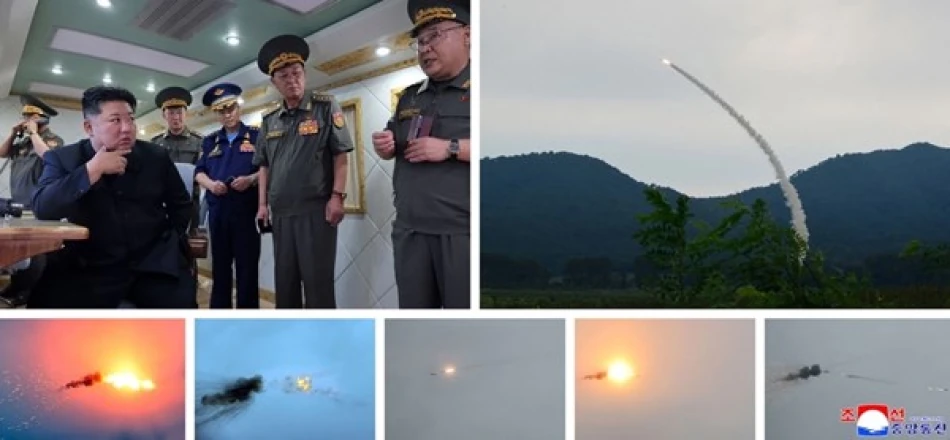
North Korea Tests Two Novel Missiles, Heightening Regional Tensions
North Korea Tests "Advanced" Air Defense Missiles Under Kim Jong Un's Direct Supervision
North Korea conducted tests of two new air defense missile systems on Saturday, with leader Kim Jong Un personally overseeing the launches, according to state media reports. The tests represent Pyongyang's continued focus on strengthening its defensive capabilities amid escalating regional tensions and growing military cooperation between South Korea, Japan, and the United States.
Enhanced Defensive Capabilities Signal Strategic Shift
The Korean Central News Agency reported that the upgraded missile systems demonstrated "superior capability" during Saturday's tests, though it provided few technical details about the weapons' specifications or launch location. The agency emphasized that the missiles operate using "unique and distinctive technology" and are specifically designed to "destroy various aerial targets."
This focus on air defense systems marks a notable complement to North Korea's well-documented offensive missile program. While Pyongyang has regularly tested intercontinental ballistic missiles and shorter-range weapons over the past several years, defensive systems receive less public attention but are equally crucial for the regime's survival strategy.
Regional Arms Race Intensifies
The timing of these tests coincides with increased military activities across the Korean Peninsula. South Korea and the United States have expanded their joint military exercises, while Japan has significantly boosted its defense spending and capabilities. North Korea's air defense improvements likely respond to the growing presence of advanced fighter jets and strategic bombers in the region.
Technology Gap Concerns
North Korea faces a substantial technological disadvantage against potential adversaries equipped with fifth-generation fighter aircraft, stealth bombers, and sophisticated cruise missiles. Developing effective air defense systems represents a cost-efficient approach to countering superior air power, following strategies employed by countries like Iran and Syria when facing technologically advanced opponents.
Kim Jong Un's Personal Involvement
The North Korean leader's direct supervision of the tests underscores their strategic importance to the regime. Kim Jong Un typically reserves his personal attendance for the most significant weapons demonstrations, suggesting these air defense systems play a critical role in North Korea's military doctrine.
His presence also serves domestic propaganda purposes, reinforcing his image as a hands-on military leader committed to national defense. This personal involvement pattern has been consistent throughout his tenure, from nuclear tests to hypersonic missile launches.
Implications for Regional Security
Enhanced North Korean air defenses could complicate potential military scenarios involving the United States and its allies. Effective surface-to-air missile systems would force opposing air forces to employ more resources and sophisticated tactics, potentially increasing the costs and risks of any military intervention.
However, the actual effectiveness of these systems remains uncertain. North Korea's claims about weapons capabilities often exceed their real-world performance, and the country lacks opportunities to test its systems against genuine threats. The isolated nature of these tests makes independent verification of their capabilities nearly impossible.
For regional security planners, these developments reinforce the need for continued investment in advanced air power capabilities and electronic warfare systems designed to overcome increasingly sophisticated air defense networks.
Most Viewed News

 Layla Al Mansoori
Layla Al Mansoori






